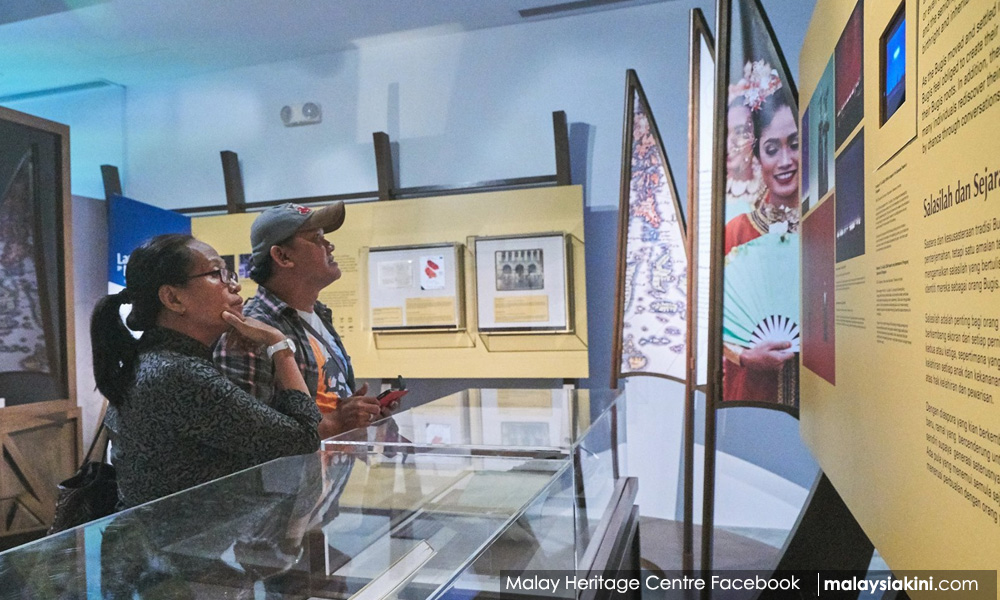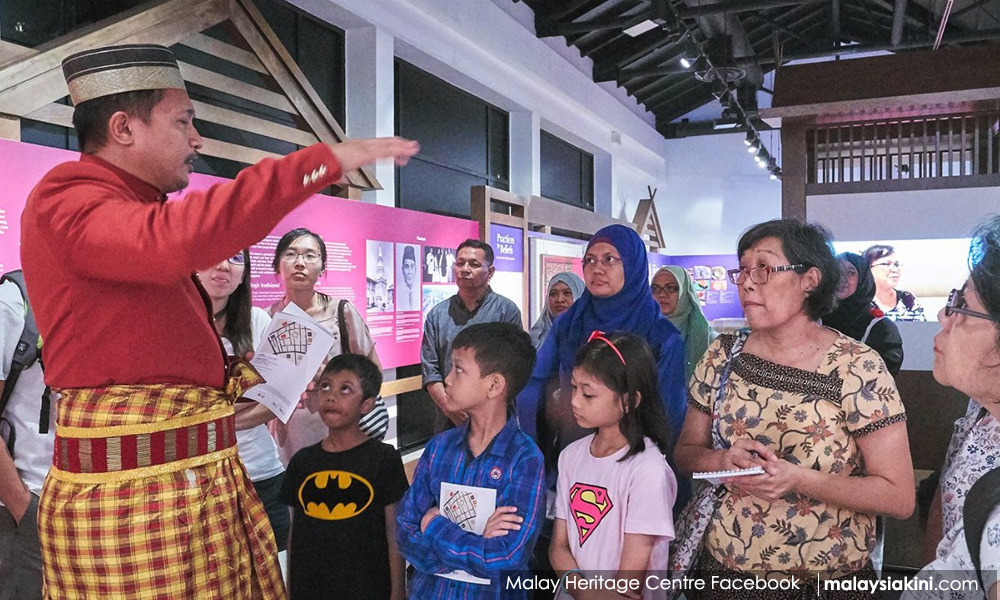While some segments of the Malaysian society got riled up over an uncouth remark on the Bugis ancestry recently, across the Causeway an ongoing exhibition is helping to shed light on who the real Bugis were.
The Sirri na Pesse exhibition examines the various facets of the Bugis identity, the people who have etched their names in the region's annals as ambitious royals, enterprising merchants and fierce warriors, and certainly not pirates as claimed by some in Malaysia.
Aptly titled after the core values of sirri (honour) and pesse (pride) in the Bugis language, I found the exhibition organised by the Singapore Malay Heritage Centre (MHC) very enlightening especially after the Bugis polemics took centre stage in the Malaysian political scene.
The exhibition at Istana Kampung Gelam that is to go on until June 24, 2018, features the history and development of the Bugis community, the smaller Malay sub-ethnic group in Singapore.
The Bugis have been part and parcel of Singapore's rich history. There is evidence that they played a significant role as trade intermediaries for the British East India Company.
At the exhibition, a letter to the governor-general of India in 1800 noted that: "In the 19th century, Bugis earned the reputation of being ‘bold trusty people’ in the region without whom the British found it impossible to carry on with our affairs in the region."

MHC in a caption at the exhibition noted that the Bugis traders’ presence in Singapore was evident during the early part of the 19th century, when the island was already a bustling trading hub.
"The Bugis merchant then was described as a seasoned traveler of the region. He would step out from a phinisi, a traditional Bugis sailing ship, bringing with him an intricately carved wrought brass chest, complete with vanity compartments, and filled with items such as valuable jewellery.
"Some of these would be traded or sold, and leave Singapore shores; others would remain here, surviving as treasured objects and family heirlooms until today," said another caption at the exhibition.
History states that the Bugis went as far as Yemen to trade and they literally lived on their ships.
Today, these objects serve as some of the visible reminders of the proud legacy of the Bugis people. The stories and memories they hold tell of the earliest seafaring traders to Singapore whose history is closely inter-twined with Singapore’s narrative as a port city.
Treasured family heirlooms
Some of the 40 objects on display are treasured family heirlooms on loan from Singaporeans of Bugis descent, such as the rich textiles worn during traditional Bugis weddings practiced even till today.
Another interesting item at the exhibition is an intricate brass chest from Sulawesi, complete with vanity compartments and an inventory list of jewellery and a moneylender’s memo.

The inventory list includes various diamond necklaces, a gold ashtray, several diamond brooches and a few pieces of finely-crafted baju kurung (traditional Malay women's attire).
The settlement of the Bugis in British colonies also made them the subject of interest among missionaries who published a guide on the Bugis language.
The guide "A Vocabulary of the English, Bugis and Malay Languages", containing about 2,000 words, was published by Mission Press in 1833 and it is among the artefacts showcased at the exhibition.
A haj guidance booklet by Sheikh Husain Abdul Rahman Bugis containing several prayers to be read during the course of the haj pilgrimage is also on display.
The author's name "Bugis" suggests his association with the Bugis community, and the booklet itself is written in Bugis Lontara and Arabic script.
A 20th century salasilah (genealogy) typed by the late Raja Adnan Raja Salaman (1929-2005) using a Hanimex "Regal" typewriter, is also one of the artefacts showcased.
Raja Adnan is one of the grandsons of Raja Ali (Tengku Nong) Raja Muhammad (1869–1955), of the Riau-Lingga royalty, who later used the typewriter to record his family’s genealogy, a labour of love he undertook until his passing at the age of 86. The typewriter is also on display.
Beyond the exhibition, there is an MRT station here named after the Bugis community - Bugis MRT Station. The community has certainly earned a recognition for themselves and are certainly proud of their Bugis heritage.
For me, the visit to the exhibition provided me the best opportunity to learn of the community's rich history and help overcome the wrong perceptions harboured by some on the Bugis community.
- Bernama

